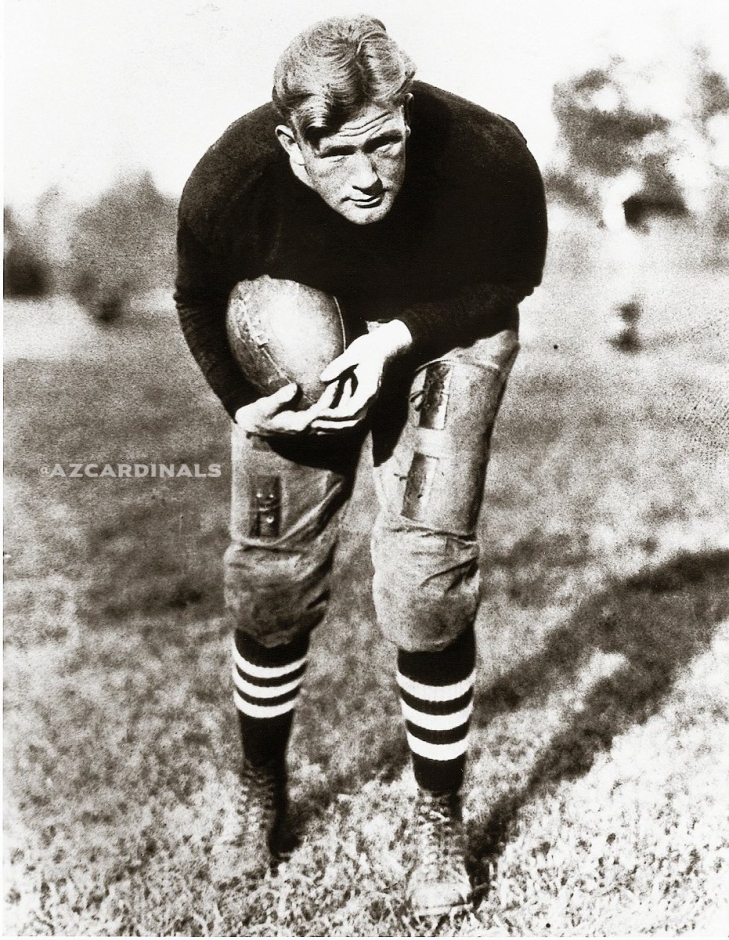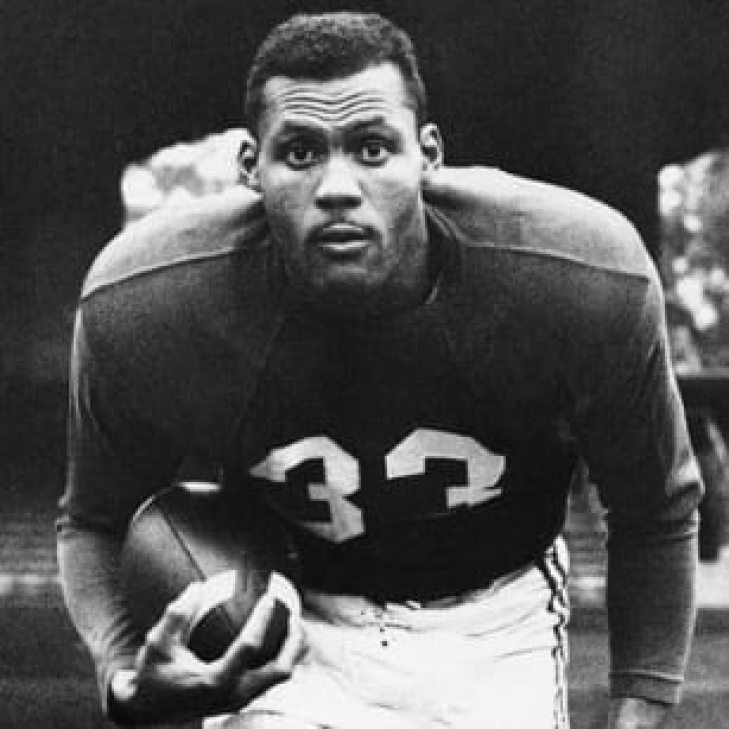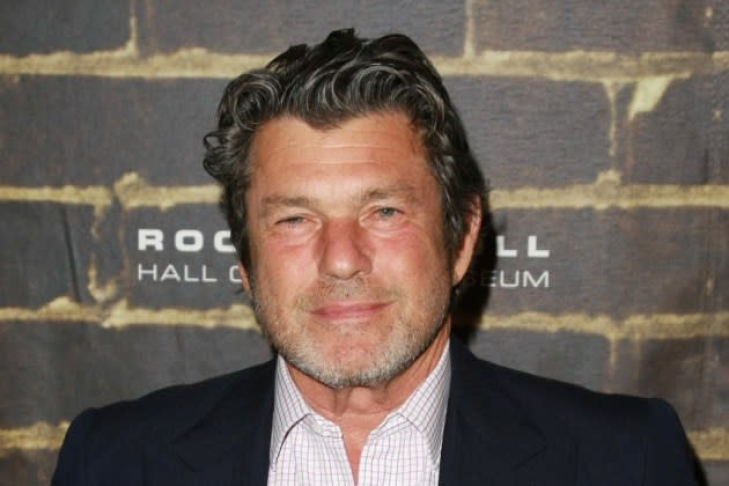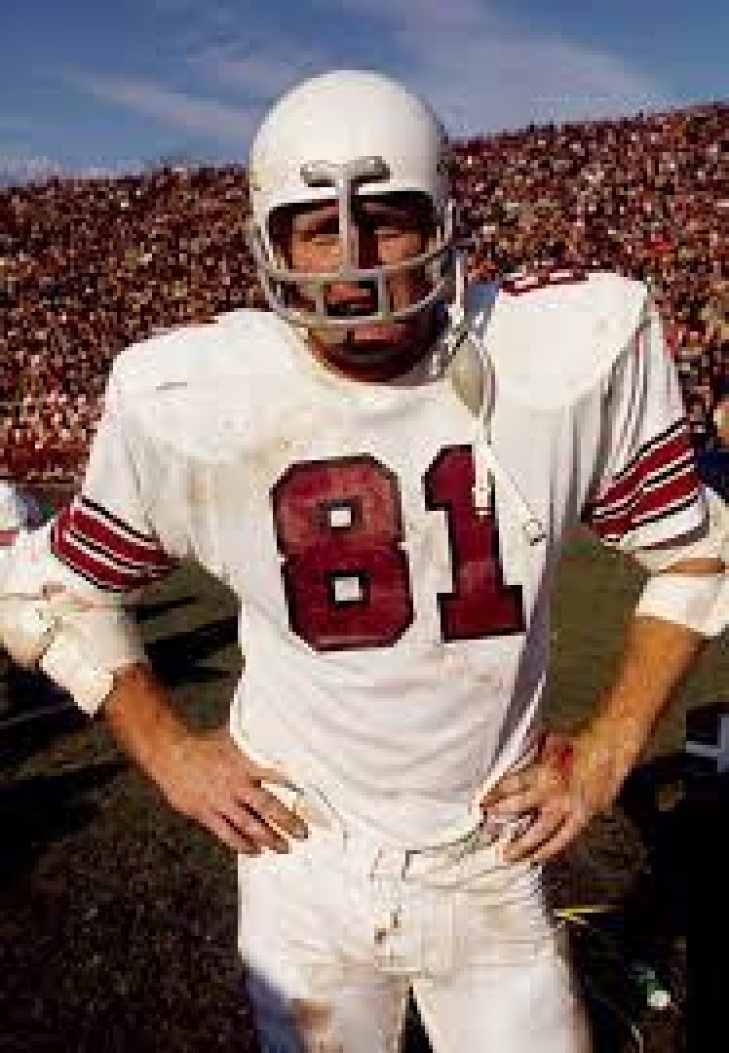
Committee Chairman
10. Ernie Nevers
Ernie Nevers was one of the best professional players in Football in 1926 and 1927, starring for the Duluth Eskimos, but it was a different time, and he left the pro ranks to coach at Stanford for a year. Despite saying that he would not return to the gridiron, the lure of the game proved too great, and Nevers joined the Chicago Cardinals in 1929 and had what was the most remarkable offensive season to date.
While official stats on Yardage, Rushing, Passing, and many others are unavailable, we know he was a bona fide touchdown creator. He set the since-tied record of six Rushing Touchdowns in a Game and scored all 40 Points in that contest. Named a Consensus First Team All-Pro, he would be so again over the next two years, though this time, he also served as Chicago's Head Coach.
Nevers retired after the 1931 Season, this time for good, and it kept his health in check as the pounding he took from being the game's top Fullback for three years took its toll.
Despite only playing two years in the 1930s, Nevers was named to the All-Decade Team and was named to the inaugural Pro Football Hall of Fame Class in 1963. Decades later, he was also part of the initial Cardinals Ring of Honor.
9. Ollie Matson
Ollie Matson, a 4x400 Olympic Gold Medalist in the 1952 Helsinki Games, already had plans after achieving huge Track and Field success; he was already the Third Overall Draft Pick by the Chicago Cardinals.
Matson had a strong rookie year with 1,326 All-Purpose Yards, a Pro Bowl, and a First Team All-Pro Selection. He missed 1953 due to military service but was an even better version upon his return, leading the NFL in All-Purpose Yards in 1954 (1,666) and 1956 (1,524) and never had a season with the Cardinals where he had less than 1,200 APY. His trophy case was laden over this period with six Pro Bowls and five First Team All-Pros.
Matson was among the few stars that the Cardinals had in the 50s, but his supporting cast was not great. Chicago only had one winning season while he was there, and the Los Angeles Rams offered seven players and two draft picks for Matson, which they agreed to. None of the players that the Cardinals received made much of a difference, but Matson's skills declined after he moved west. Matson left behind 8,544 All-Purpose Yards and 46 Touchdowns.
An All-Decade Player in the 1950s, Matson entered the Pro Football Hall of Fame in 1972. He was part of the first group when the Cardinals began their Ring of Honor in 2006.
Jann Wenner booted from the Rock and Roll HOF Board of Directors
The Rock and Roll Hall of Fame has severed ties with Jann Wenner, who was the mastermind and co-founder behind the institution, and was still on the Board of Directors. This stemmed from the backlash from comments he made in an interview with the New York Times while promoting his book, where he criticized black female artists.
The statement was very direct:
“Jann Wenner has been removed from the Board of Directors of the Rock & Roll Hall of Fame Foundation."
Ouch!
In the Times interview, he was pressed on why he only profiled white male rockers, and he retorted that black and female musicians were not “as articulate” as those he wished to profile. He doubled down on the ignorance:
"For public relations sake, maybe I should have gone and found one Black and one woman artist to include here that didn't measure up to that same historical standard, just to avert this kind of criticism.”
While Wenner apologized for those remarks, his apology was clearly not accepted by his own creation.
8. Jackie Smith
The speed of Jackie Smith earned him a late-round selection (10th Round) in 1963 by St. Louis, who converted the Flanker into Tight End.
Smith was an excellent blocker, but his receiving skills helped transform the position, and he amassed 7,918 Yards with 40 Touchdowns from the air. He also earned five consecutive Pro Bowl Selections (1966-70).
Notably, Smith also served as the Cardinals Punter for his first three years.
He entered the Pro Football Hall of Fame in 1994.





